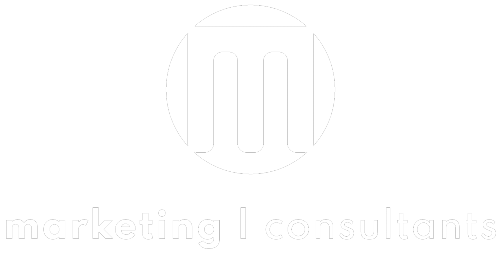Running a successful ad campaign isn’t just about creating the right message—it’s about getting that message in front of the right people at the right time. Without a clear media planning strategy, even the best ads can miss their mark.
A strong media planning strategy helps businesses spend their budgets wisely, reach the right audience, and get better results from their campaigns. Whether the goal is to increase brand awareness or drive sales, a structured approach to media planning ensures that advertising dollars are put to good use.
What Makes a Media Planning Strategy Effective?
A strong media planning strategy relies on four key components:
1. Audience Research: Who Are You Speaking To?
Every great marketing campaign starts with understanding the audience. Without it, even the most compelling ads can miss the mark.
Why It Matters:
- Knowing your audience’s demographics, interests, and online behaviors allows for better message alignment.
- It helps determine where your audience is most active, ensuring ads are placed in the right spaces.
For example:
- A Gen Z-focused brand might prioritize TikTok and Instagram, where younger consumers engage most.
- A B2B company might focus on LinkedIn, where industry professionals connect and interact.
Without proper audience research, businesses risk wasting ad spend and missing out on key customer segments.
2. Channel Selection: Where Should Your Message Appear?
Even the most well-crafted ad won’t perform if it’s on the wrong platform. Businesses must be strategic in choosing where to run their campaigns.
Key Considerations for Choosing the Right Channels:
- Digital Platforms (Google Ads, social media, programmatic display) → Ideal for targeted reach and data-driven insights.
- Traditional Media (TV, radio, print) → Best for broad brand awareness and high-frequency exposure.
- Omnichannel Strategy → Using a mix of digital and traditional channels ensures wider visibility and multiple touchpoints.
By aligning media choices with business goals and audience habits, companies can avoid overspending on ineffective platforms and get the best return on investment.
3. Budget Allocation: Spending Wisely on Advertising
A well-structured budget is just as important as the total amount spent. Many businesses make the mistake of spreading their budget too thin or overinvesting in one area without testing alternatives.
Smart Budgeting Tips:
- Prioritize high-performing platforms – Invest more in channels that have consistently delivered strong results.
- Leave room for experimentation – Testing new channels or ad strategies can uncover untapped opportunities.
- Monitor and adjust – Regular performance tracking helps ensure resources are allocated wisely.
Rather than setting a fixed budget upfront and leaving it untouched, businesses should stay flexible, adjusting spend based on real-time campaign performance.
4. Timing: Why When You Advertise Matters
Even the best message can fail if it doesn’t reach people at the right time. A strong media planning strategy considers when the audience is most likely to engage.
Examples of Strategic Timing:
- Retail Campaigns → Perform best during peak shopping seasons like Black Friday.
- Restaurants → Ads placed before or around meal hours drive better engagement.
- B2B Marketing → Campaigns tend to see higher engagement during the workweek, when decision-makers are online.
A well-planned schedule ensures ads are seen when they’re most relevant, improving both engagement and conversion rates.
How Media Planning Fits into the Bigger Picture
Media planning isn’t a standalone process—it’s a key piece of a larger marketing strategy. For a campaign to be truly successful, media planning must work alongside creative development, cross-channel marketing efforts, and ongoing performance analysis.
Here’s how media planning connects with other essential marketing elements:
1. Creative Strategy & Content Development
The best media plans aren’t just about placements—they’re about delivering the right message in the right format. A strong creative strategy ensures that:
- Ad content is tailored to fit each platform. A 15-second TikTok ad requires a different approach than a LinkedIn infographic or a TV commercial.
- Visuals, tone, and messaging remain consistent across channels while adapting to audience expectations.
2. Cross-Channel Marketing & Consistency
A well-planned media strategy ensures that brands maintain a cohesive presence across all marketing channels.
- Consumers often engage with brands on multiple platforms—a user may see a Facebook ad, hear a radio commercial, and later visit the brand’s website.
- Aligning messaging across all touchpoints strengthens brand recognition and builds trust.
3. Ongoing Performance Review & Strategy Adjustments
Successful media planning doesn’t stop when a campaign launches—it’s an ongoing process of optimization.
- Regular performance tracking helps businesses identify which platforms are delivering results and where adjustments are needed.
- Testing new formats, adjusting timing, and reallocating budgets based on real-time data ensures continuous improvement.
The Bigger Picture: A Sustainable & Scalable Marketing Approach
Viewing media planning as one part of a broader marketing puzzle helps businesses create sustainable, scalable campaigns. When media planning, creative development, and cross-channel coordination work together, the result is a campaign that not only reaches the right audience but also drives meaningful engagement and long-term success.
Common Pitfalls in DIY Media Planning (and How to Avoid Them)
Without proper expertise, businesses often fall into common media planning traps that can waste ad spend and weaken campaign results. Here are some of the biggest mistakes companies make when trying to plan their media strategies alone:
1. Overspending on the Wrong Channels
Many businesses default to the most popular advertising platforms, assuming they’ll yield the best results. But not every platform fits every campaign.
Example:
- A local business investing heavily in national TV ads may struggle with overspending on a broad audience instead of reaching local customers.
- A B2B company may put too much focus on social media ads when LinkedIn or trade publications would be more effective.
How to Avoid It: A well-planned media strategy ensures that budget is allocated to the channels that best align with audience behaviors and business goals—not just what’s trending.
2. Missing Key Audience Segments
Without thorough audience research, businesses often fail to reach potential customers who would have engaged with their message.
Example:
- A retail brand may target general consumers but miss an opportunity to advertise to repeat buyers or VIP customers.
- A tech startup may ignore decision-makers in their industry by focusing only on broad consumer audiences.
How to Avoid It: Professional media planners analyze customer data, track buying behavior, and ensure ad campaigns reach the right people—at the right time.
3. Inconsistent Messaging Across Platforms
When different teams or agencies run disconnected campaigns, brand messaging can become fragmented, leading to a weaker brand identity and lower audience trust.
Example:
- A brand running formal, professional ads on LinkedIn but using casual, meme-based content on Facebook could create confusion.
- A restaurant promoting a limited-time offer on radio but not updating its digital ads or social media may frustrate customers.
How to Avoid It: Strategic media planning ensures consistency across all platforms, creating a seamless brand experience that builds audience trust.
Why Expert Media Planning Makes a Difference
Navigating these pitfalls requires more than just guesswork—it takes data-driven insights, strategic budget allocation, and an understanding of media trends.
At M-Marketing Consultants, we specialize in eliminating these common mistakes by crafting media plans that maximize reach, prevent wasted spend, and create cohesive messaging across all platforms.
🔹 See how we’ve helped brands succeed: Our Work
💬 Let’s create a media strategy that works for you: Contact Us
Frequently Asked Questions on Media Planning Strategy
What is a media planning strategy?
A media planning strategy is a structured approach to selecting the right media channels, targeting the right audience, and determining the best timing for ad placements. It ensures that every campaign decision—budget, platforms, and messaging—aligns with your marketing objectives to generate the highest return on investment (ROI).
How does media planning fit into a broader marketing strategy?
Media planning is a key part of a successful marketing strategy. It works alongside creative development and cross-channel coordination to ensure that your messaging is consistent and effective across all platforms. A strong media planning strategy enhances campaign performance by ensuring ad placements support overall business goals.
How should I allocate my advertising budget effectively?
Budget allocation starts with understanding your audience and their media consumption habits. To maximize results:
- Prioritize high-performing channels that have proven success.
- Leave room for testing new platforms and advertising methods.
- Monitor campaign performance and adjust spending based on real-time data.
💡 Need help optimizing your media budget? M-Marketing Consultants can guide you.
How do I measure the success of my media planning strategy?
The effectiveness of a media planning strategy is measured through key performance indicators (KPIs) such as:
- Impressions & Reach – How many people saw your ad?
- Click-Through Rates (CTR) – How often did users engage with the ad?
- Conversions & ROI – Did the campaign lead to measurable business results?
Tracking these metrics across multiple channels helps identify what’s working and where improvements are needed. A strong strategy includes ongoing performance reviews to continuously improve results.
About the Author

Mike McNeill
Mike McNeill is the founder of M-Marketing Consultants, bringing over 20 years of experience in media buying, marketing strategy, and business growth. With a passion for helping people and businesses reach new heights, Mike specializes in crafting innovative, data-driven campaigns that deliver measurable success. As a franchise owner of The Good Feet Store, he combines entrepreneurial insight with a dedication to improving lives. His expertise has made him a trusted authority in navigating the complexities of modern media and driving meaningful results.

